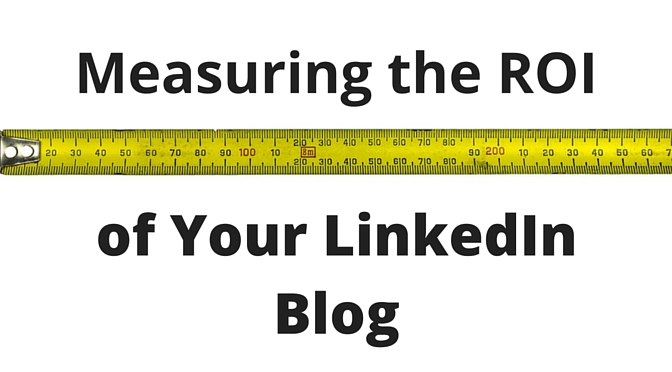We’re always trying to measure results, aren’t we? If you’re thinking about publishing blog posts on LinkedIn, you’ve probably wondered what kind of results to expect, and how to measure success. If you’re outsourcing the writing to a LinkedIn expert, you will also be concerned about getting a good return on that investment.
Is blogging on LinkedIn a worthwhile investment of your time? The short answer is…Yes! LinkedIn currently has more than 433 million members and the number keeps growing. You can read my post that explains three reasons to blog on LinkedIn: readership, findability, and distribution.
But if you want to be sure blogging is worth the effort, you need to know what numbers to track. How do you measure your blog post’s impact?
Clicks/Views
How many people have viewed your post? This is your first metric for success. A view doesn’t necessarily mean a potential reader has read the whole blog post, but it is a good sign. It also shows that your headline and first couple sentences are engaging.
Likes
Once you have readers in the door, you want to know what they think. You’ll probably get more likes than comments, because it takes less time to click “like” than to write a comment. Likes are useful because they give you a general idea of how much interest your post is generating.
Comments
Here is where we start to look at quality. A quality comment adds to the dialogue, asking a question, sharing a fresh perspective, maybe even posing a counter-argument. It’s a good idea to respond briefly to comments, even if the commenter disagrees with you.
Followers and Connections
A successful blog post will compel readers to “follow” you on LinkedIn or connect with you. Followers who aren’t connected to you won’t be able to see your entire profile, but will get alerts when you post. This is an important metric because it demonstrates that readers are interested in learning more about your ideas, your perspective, and your solutions.
But look beyond the raw statistics – notice who these new readers are. How relevant are they to you and your work? Are these the type of people you can help, and who can help you?
Actions
If your blog post had a call to action, such as inviting people to register for a webinar or sign up to download a checklist, you’ll want to measure how many people visited the sign-up page and how many actually signed up. Those numbers aren’t available through LinkedIn, but you can see them in your website analytics and your marketing automation software or CRM (wherever you capture leads).
Conversations
Likely the best result from your blog post is to initiate conversations. Again, when measuring results, you’re most interested in quality, because you want to reach relevant people who are genuinely interested in learning more and/or sharing their own insights.
LinkedIn is all about interaction and connection. Numbers are important, but they can’t give us the full picture. You know your business and your audience. You have a specific goal in mind. Getting a thousand clicks sounds wonderful. However, engaging with two or three truly relevant readers might be exactly what you need. What are the best results you’ve ever had from a blog post?

